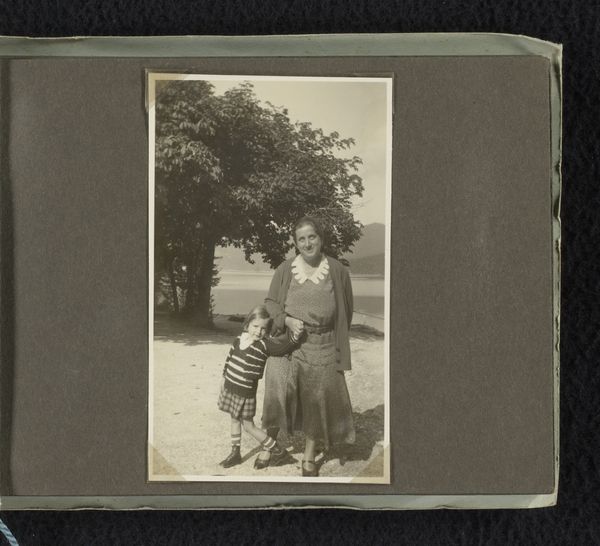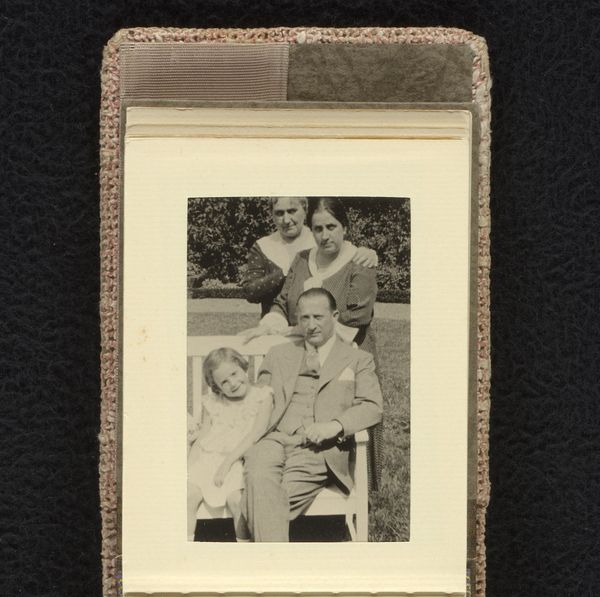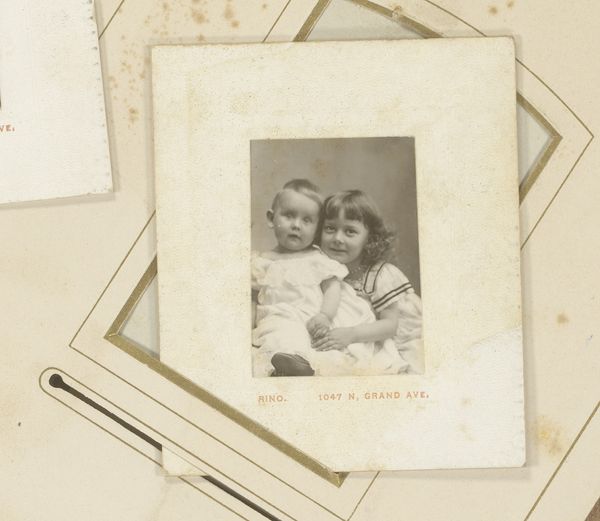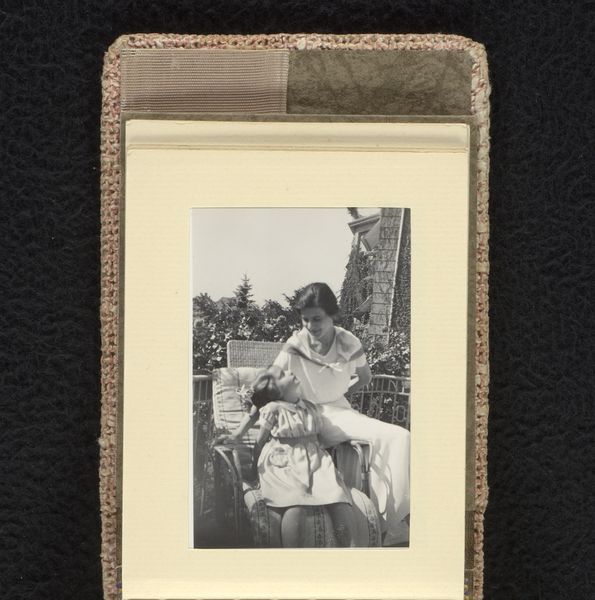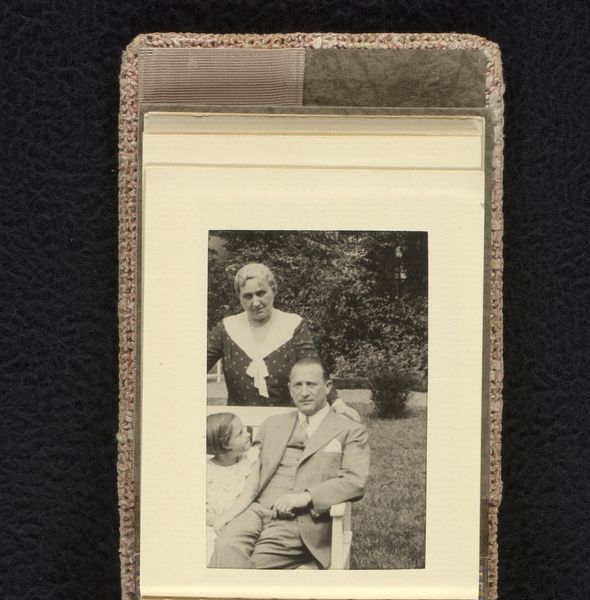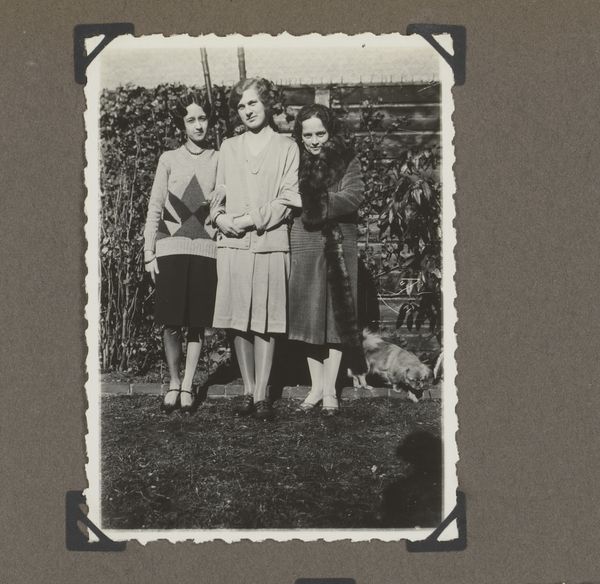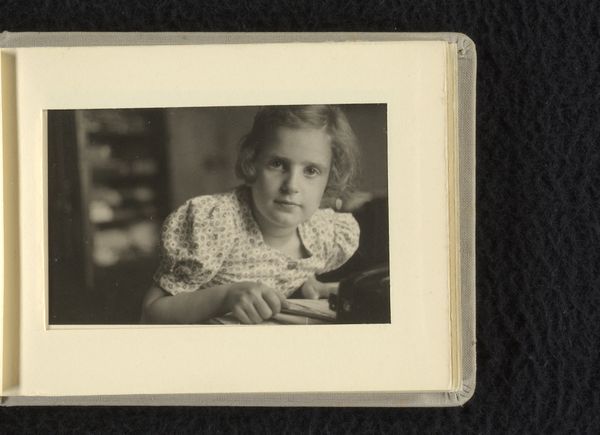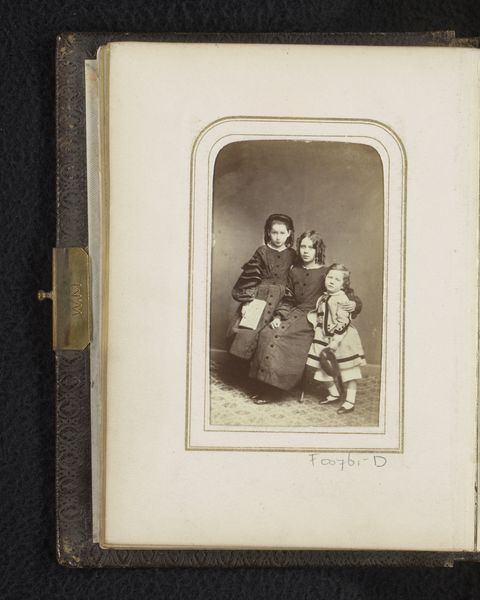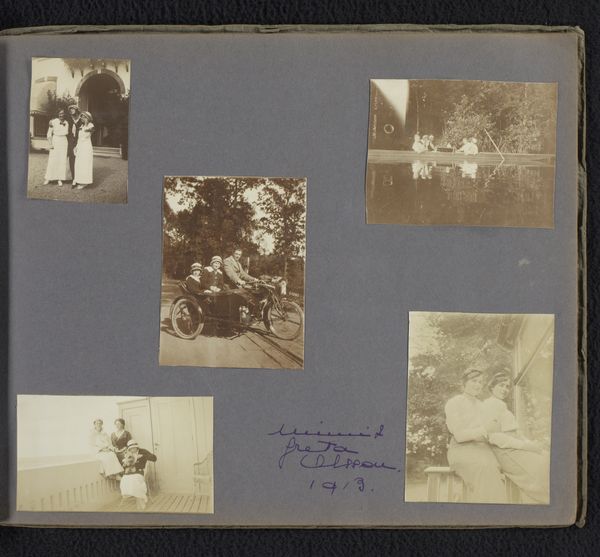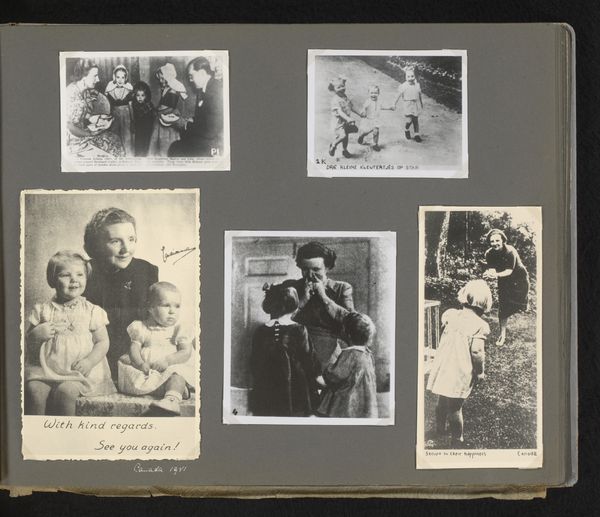
Isabel Wachenheimer in de tuin met het kindermeisje en tante Trude of Hede, juni-augustus 1933, Hamburg 1933 - 1939
0:00
0:00
photography, gelatin-silver-print
#
portrait
#
photography
#
coloured pencil
#
group-portraits
#
gelatin-silver-print
#
realism
Dimensions: height 65 mm, width 92 mm, height 80 mm, width 106 mm
Copyright: Rijks Museum: Open Domain
Curator: Looking at this gelatin silver print, one immediately gets a sense of intimate history. We're seeing "Isabel Wachenheimer in the garden with the nanny and aunt Trude or Hede", photographed in Hamburg sometime between June 1933 and 1939. Editor: It's got such a melancholic feel for a family photograph, doesn't it? Even without knowing the full context, you sense a kind of fragility in their expressions, especially the child. Curator: Indeed. Knowing the context of its creation—within the rising tide of Nazi Germany—that feeling is almost certainly amplified. What interests me is the materiality of the print itself. Its existence speaks to a need for preserving memory against the backdrop of a collapsing world, really. Editor: And how even something so seemingly straightforward as family photography— the accessibility of it— becomes intensely poignant under those pressures. It’s just… bittersweet, isn’t it? Curator: It certainly underscores the complex relationship between the photographic process as a form of documentation and resistance. The materiality of the silver print transforms into something far more than just ink on paper. It's evidence. Editor: It's fascinating how a simple portrait, rendered in monochrome, can suggest so much tension beneath the surface. You almost don’t want to know the ‘real’ story because the imagined one feels powerful enough. Curator: Yes, but consider also the social dynamics embedded here. Wealthy families using gelatin silver printing for personal keepsakes points to broader trends of class, consumerism, and memorialization that are inherent to the act of preservation itself. Editor: That’s true. Thinking of it in relation to that context definitely anchors it in a real world. Even so, it’s that initial, gut emotional reaction it provokes that lingers, for me, after encountering the image. Curator: It’s certainly a work layered with meaning—both intended and perhaps unconsciously conveyed—and it really does spark introspection about that pivotal time. Editor: Definitely, seeing through a lens of personal experience intersecting with looming external turmoil offers a somber depth of insight.
Comments
No comments
Be the first to comment and join the conversation on the ultimate creative platform.
